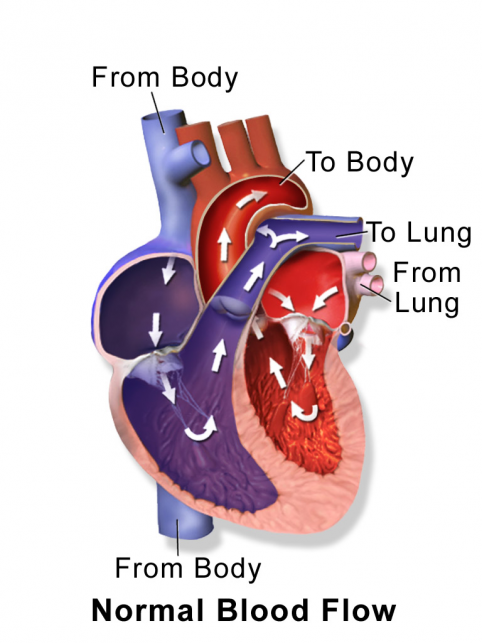The image below shows the pathway your blood takes through your heart. It travels from your lungs where it has picked up oxygen from breathing (oxygenated blood), through your heart to be pumped to the rest of your body. There it gives up oxygen to your tissues (becomes deoxygenated blood) and then goes back through your heart to your lungs to pick up more oxygen.
Your heart valves close behind the flow of blood, stopping it from flowing backwards through your heart. When you listen to a typical heartbeat with a stethoscope you can hear the heart valves closing making a ‘lub-dub, lub-dub’ sound.
 Image credit: Medical gallery of Blausen Medical 2014(external link)
Image credit: Medical gallery of Blausen Medical 2014(external link)
If the blood flow through your heart is fast, uneven (known as turbulent) or in the wrong direction (eg, backwards through a leaky valve), it causes an extra whooshing or humming sound that’s known as a heart murmur. The sound of a murmur is different depending on whether it happens when your heart is relaxing to fill up with blood (diastolic murmur) or when it’s contracting to pump blood around the body and lungs (systolic murmur). Sometimes you can have a continuous murmur if it can be heard all the time.
Heart murmurs can be harmless and nothing to worry about (known as innocent). This is generally when the normal flow of blood through your heart can be heard. However, a heart murmur may be a sign that something is wrong with your heart – especially if you have symptoms suggesting it’s not working properly (see the symptoms section below).






